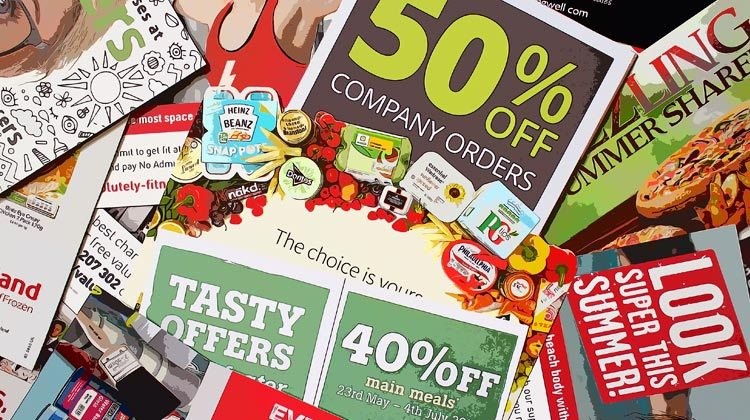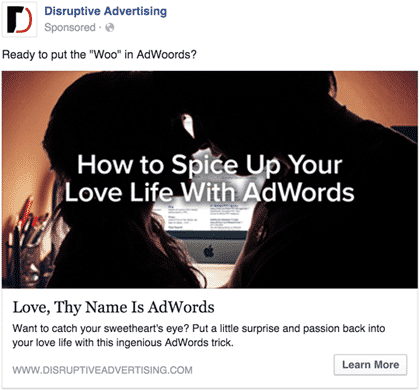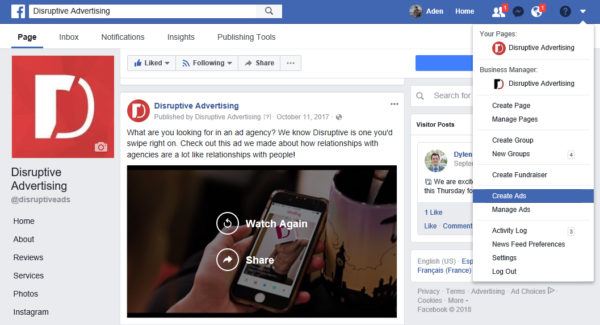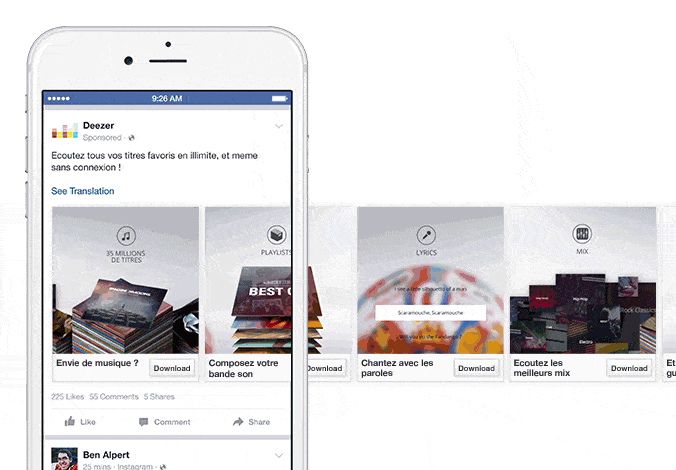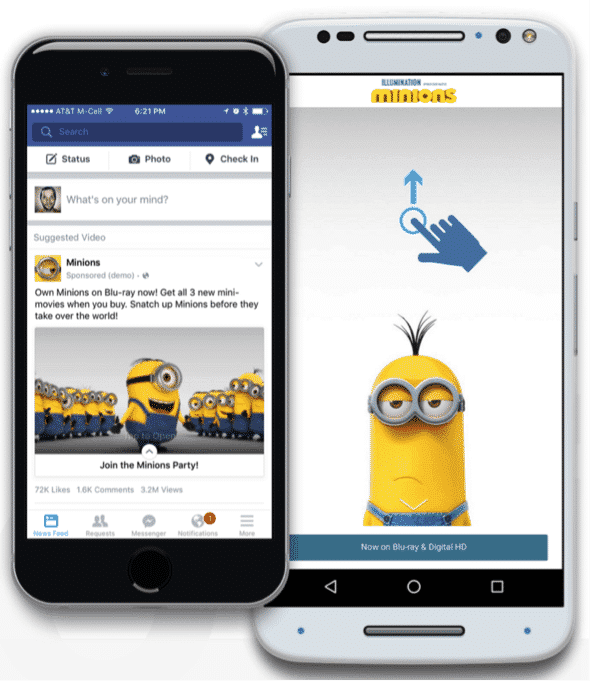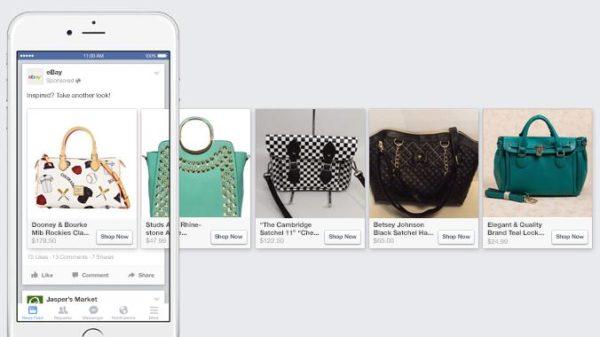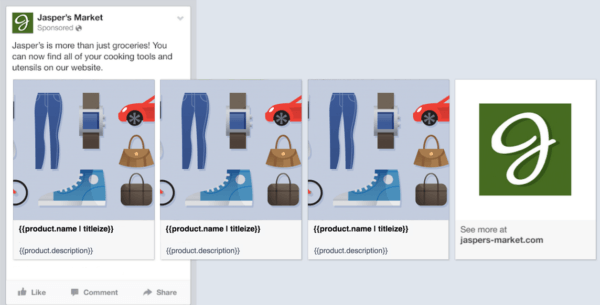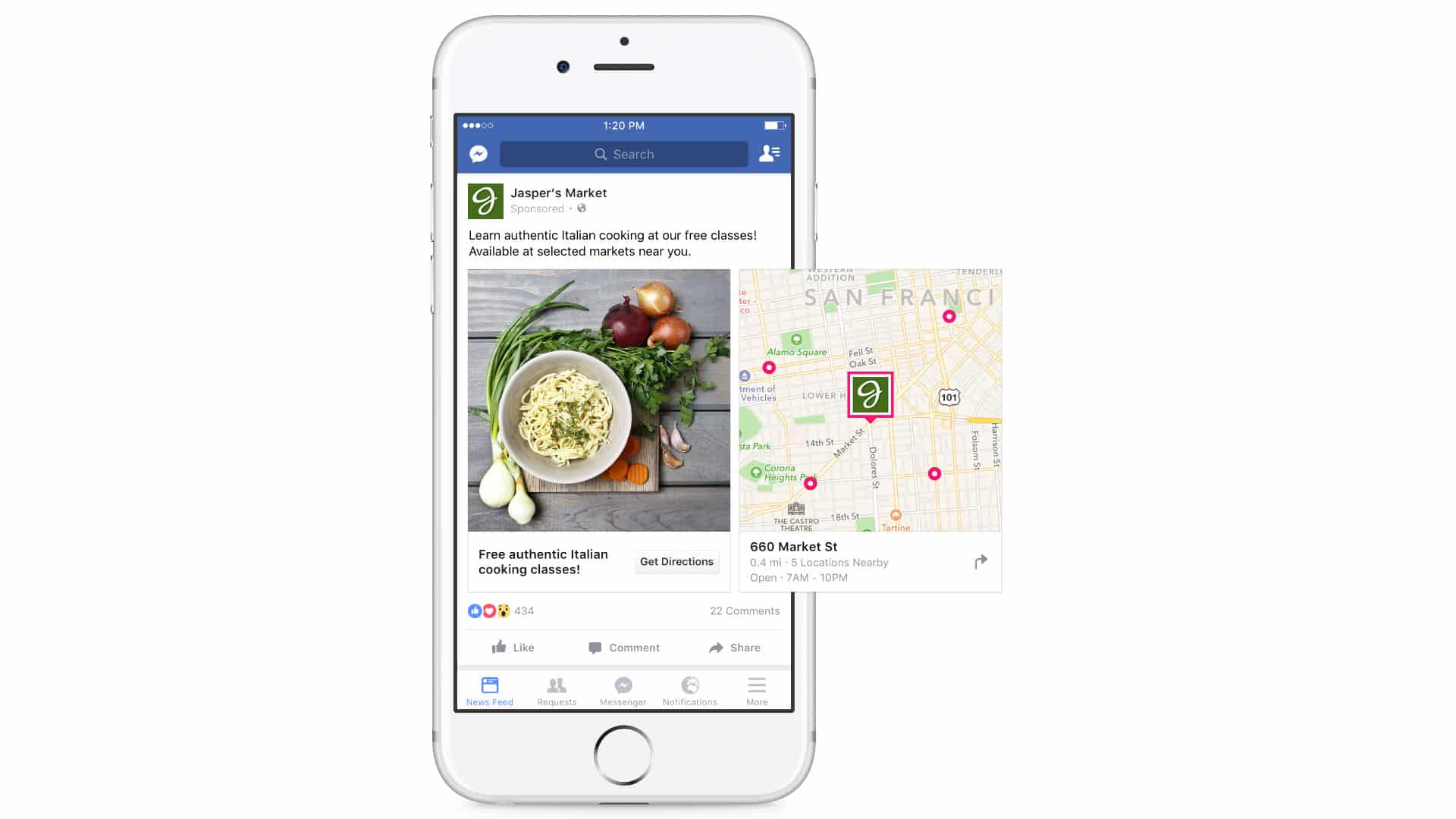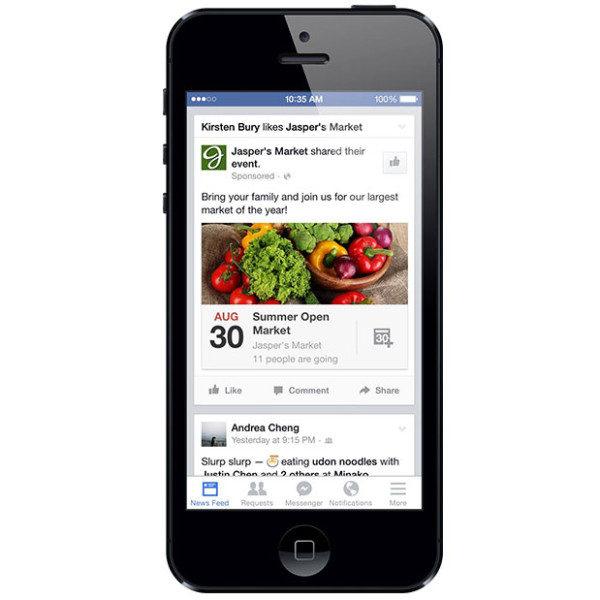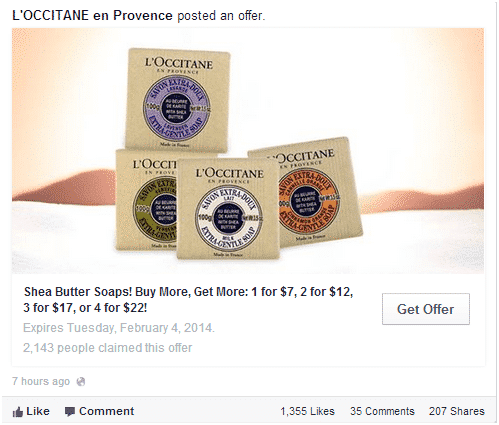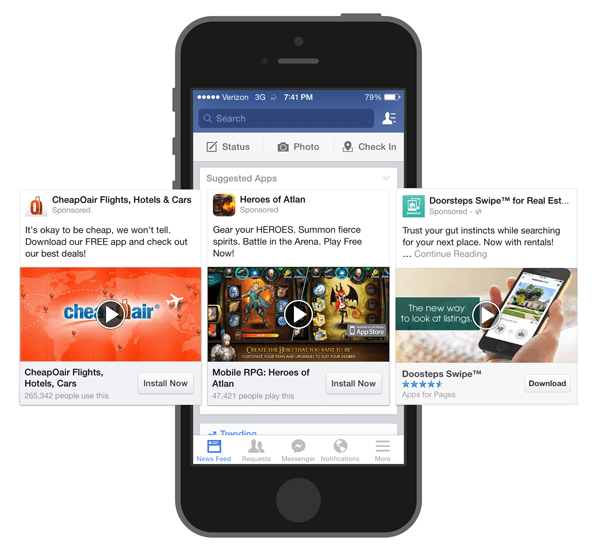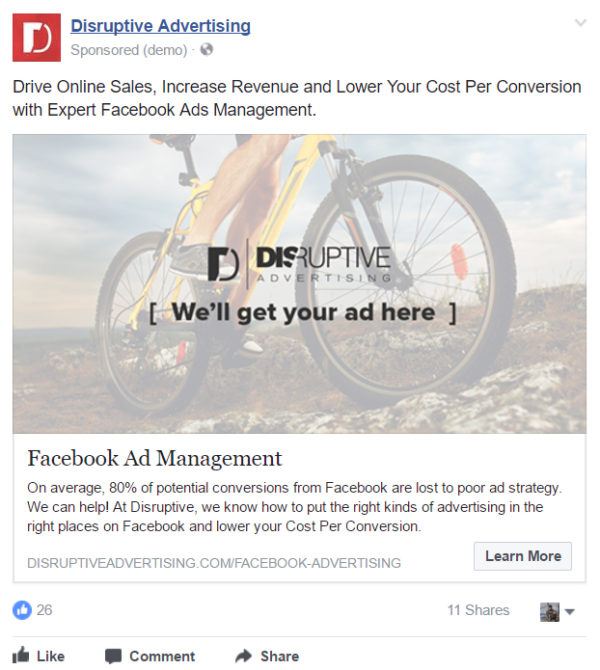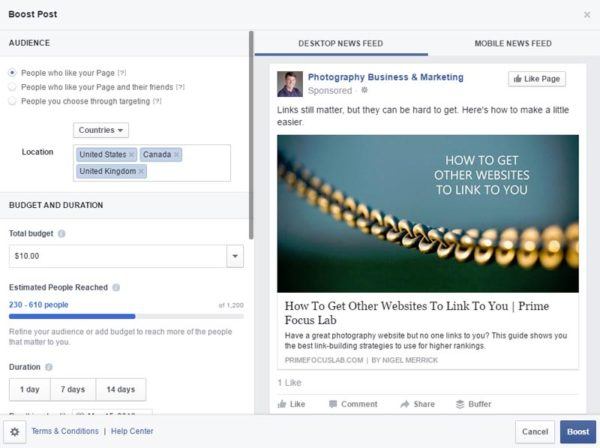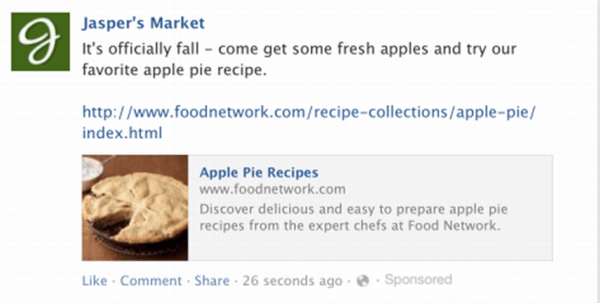by Jacob Baadsgaard • February 13, 2018
Choosing the Right Facebook Ad Types for Your Business
So you’re considering marketing on Facebook…
You’ve made a Facebook page for your business, written a few posts, and gotten some likes, but you’re ready for your page to be more than an excuse to be on social media during work hours.
Your new objective is simple—start making money on Facebook—but accomplishing it can seem pretty complicated when you look up “Facebook ad types” on Google and are presented with a list like this:
Facebook Ad Types
- Link click ads
- Video ads
- Picture ads
- Boosted posts
- Mobile app downloads
- Desktop app downloads
- Event ads
- Local awareness ads
- Offer claim ads
- Carousel ads
- Collection ads
- Dynamic product ads
- Canvas ads
- Lead ads
- Page like ads
- Page post image ads
- Page post video ads
- Page post text ads
Where to start? It can be pretty daunting at first, but don’t give up! You don’t have to worry about every ad type in existence, only the ones that will be of most benefit to your business.
Which are those? That’s what this article is all about.
Intentional Advertising
The main difference between an every-day cat video post and a Facebook ad is that an ad is a concentrated effort to get your audience to do something. You want them to do this thing so bad that you’re willing to pay just to give them the chance.
So what do you want them to do?
This is the key question. If you have an answer then you’re ready to choose the ad type that will best inspire the desired action. If you’re not sure, then chances are you won’t succeed no matter what ad you run.
The rest of this article will be divided into the actions that you want your ad viewers to perform.
I want people who see my ads to:
- Visit my website!
- Buy my stuff!
- Go to my store!
- Download my app!
- Share contact info!
- Like my page!
Depending on what you’re after, you can either scroll down to the appropriate section for your advertising goals or read through the whole article. Let’s get started!
Facebook Ad Types: Site Visits
If the main thing you want from your Facebook ad is for people to get off of Facebook and onto your site (great for bloggers, news sites, etc.), then you need an ad that makes this as easy as possible.
Link Ads
The most straightforward approach is the Link Ad.
This looks basically like a shared article on anybody’s timeline, but you’re sending it to people who aren’t your fans…yet.
At the top of the ad you can insert a brief description of why your link’s so great, then you get a picture to capture attention, a headline, some more descriptive space, a URL (which you can customize to increase trust) and finally a call to action button.
The great thing about Link ads, though, is that it doesn’t matter which of these areas they click! The whole ad from the picture down is one giant button which will send your viewers straight to your landing page.
Video Ads
Video ads are very similar, but instead of offering a link to more, you can put your whole advertising message into a video that starts playing the instant viewers scroll past it.
The obvious advantage to this approach is that videos are WAY more eye-catching than text and still photos.
Think about your own personal Facebook wall…when you scroll past a video, odds are that you watch the first few seconds of it regardless of whether it comes from a friend or a business.
In those initial seconds, you decide whether the video is interesting or not. Then, the next thing you do is check the video length to see if it’s worth your time. If it passes both these tests then you’re likely to watch it through.
Awesome! For marketers, this means that if you can make a video engaging enough to interest people in a few seconds and just the right length to keep them from moving on (about 1 minute for Facebook), then you get a chance to get your whole marketing message seen!
The disadvantage to video ads is that they can be digested entirely without leaving the Facebook platform. This could be a problem if your main goal is driving traffic to your site.
To get around this obstacle, consider putting a call-to-action inside your video. Leave your audience wanting more, and make it clear that what they’re looking for is just a click away.
Facebook Ad Types: Product Purchases
If you’re an ecommerce business, then the number one goal of your ad campaigns is most likely to drive up the number of purchases your target audience makes.
Facebook offers a number of options to advertise just the products that your viewers are looking for.
Carousel Ads
The broadest approach is the Carousel Ad—a series of up to ten miniature product ads which you choose based on the interests of your target audience.
Each ad can feature either a picture or a video and can cycle automatically or be clicked/swiped through one at a time by viewers.
Ads like these take a shotgun approach by presenting a lot of content in a way that encourages consumer interaction, in the hopes that your target viewers will be inspired to buy something they see.
To maximize the interactive element of carousel ads, consider arranging your pictures in a way that tells a story, so that viewers will want to see the whole ad from start to finish.
Collection/Canvas Ads
If your audience tends to shop on mobile devices (or if you’re trying to break into this crowd) then Facebook has a similar option that’s even more mobile specific.
Collection Ads feature a cover image or video at the top and a sampling of selected products at the bottom. Click on one of the featured products, however, and a “Canvas ad” opens.
This mobile-exclusive format fills the entire screen like a miniature app, and allows additional interactions like browsing product catalogs, reading reviews, watching videos and (of course) visiting your site to make a purchase!
Dynamic Ads
The advertisements just discussed are a great way to highlight specific products to generate new interest in your target audience.
Dynamic ads take the opposite approach. Rather than telling people about products they’ve never heard of and hoping they’ll visit your site, dynamic ads target people who’ve already been to your site and offers them a second look at the product they were considering.
On the surface the ad above might look like another carousel, but rather than a series of images meant to tell a story together, each product’s mini-ad is based on a preset form, then populated with whatever products the viewer had been browsing recently.
What this ad style lacks in flair and storytelling, it makes up for in specificity. This makes it useful when your audience contains many small niche markets or when you are retargeting people who have already visited your website.
For example, I often see ads like this on my Facebook feed after I’ve been shopping pet supplies. If I own a turtle, I wouldn’t be interested in ads specifically featuring products for other animals, no matter how beautifully crafted they are. Show me again that aquarium filter that I used to have in my shopping cart, however, and I might be persuaded…
Facebook Ad Types: Brick-and-Mortar Shop Visits
Not every business does best selling its goods online. Grocery stores, for example, get most of their business by drawing people to their premises, not by sending their vegetables out.
Facebook has a variety of ad types which cater to traditional businesses of all shapes and sizes!
Local Awareness Ads
A brick-and-mortar fresh flowers boutique in a small town wouldn’t benefit much from advertising to every flower lover in the whole world; they care more that when a special occasion rolls around everyone in town knows their name and where to find them.
Local awareness ads are the perfect way to get this message out.
These ads are sent only to Facebook users logged in within a certain radius of a business, and can include a “call now” button or a map card with a “get directions” call to action linking directly to the map function on the viewer’s device.
Functions like these make it as convenient as possible to find or contact the store. Once people are in the store…well, it’s up to the skill of the workers to decide which Valentine’s Day flowers the customers go home with!
Event Ads
Speaking of Valentine’s Day, another great way to get local visitors is to advertise special events!
If you want to get people to your upcoming booksigning, guest speaker, concert, or open house, you may want to create an Event ad.
These ads create a Facebook event and post invitations on the newsfeed of your geographic and demographic target audience. Once people click “join”, they’ll get reminders from Facebook until the even occurs!
Offer Ads
A very special kind of “event” is a time-limited offer, advertised in an Offer ad.
This is essentially an electronic coupon which can be redeemed simply by clicking the ad.
Offer ads can give your customers up to 8 different types of codes to redeem (text codes, bar codes, QR codes, etc) depending on the setup of your business. These offer codes can be used at the check-out stand in a brick-and-mortar store, but can be equally useful for an ecommerce website.
Like Event ads, Offer ads give you a bit of “free advertising” since anyone who clicks “get offer” will be sent reminders from Facebook until the deal expires. During the final 24 hours Facebook will even display a countdown, creating a sense of urgency like no other Facebook ad type!
Facebook Ad Types: App Downloads
While product carousels and location maps may be helpful in selling physical products, the needs of service-based businesses are different.
Service businesses—like transportation, gaming, education, and home maintenance—tend to thrive when people find it convenient to access the service. For many businesses this convenience is achieved by creating an app to streamline the process, but this strategy only works if people download the app.
App Install Ads
There are two basic types of App Install ads: mobile and desktop. Since App Install ads typically work best on mobile, here’s a quick shot of the mobile ad version:
These ads look a lot like a standard video or picture ad, but the call to action is something like “install now” and, when clicked, the ad immediately opens the app store on the user’s device.
Mobile apps can be used not only on the Facebook newsfeed, but also on Instagram. This makes a lot of sense since most people on Instagram are already mobile app users.
Facebook Ad Types: Lead Generation
We’ve discussed ways to drive traffic to your site, encourage online shopping, get people in the door at your store and encourage app downloads, but sometimes what you need from your customers doesn’t fall under any of these categories.
Legal services, for example, can’t be sold or downloaded in neat prepackaged units. The needs of each client are unique, and so the most important thing their ads can do is to start the conversation between clients and counsel.
Lead Ads
Facebook has an option for generating leads like these. Lead ads always involve the consumer filling out contact information of some kind of form, which can be a pain point for customers. Facebook makes the process more convenient by prepopulating the forms with contact information that it already has access to.
Possible uses of lead ads include developing subscription lists for newsletters and offers, booking appointments for services and encouraging signups for special deals and opportunities.
The best part is that all the form filling and submission can be done in a few taps of a screen, without leaving the Facebook platform at all!
Facebook Ad Types: “Likes” and Page Engagement
The last objective of your Facebook marketing I’ll cover is interaction with your Facebook page itself.
I’m addressing this point last because I’ll admit I’m a bit skeptical regarding the value of “likes” and other Facebook page interactions.
We all like to be “liked,” but although getting a positive reaction to your posts is emotionally fulfilling, it doesn’t necessarily translate into meaningful conversions. In fact, according to SocialSamosa, only 1% of people who “like” a business’s Facebook page will ever actually visit it.
In theory, when somebody likes your page on Facebook, they are essentially signing up for free advertising as your future posts show up on their feed without you having to pay extra for it.
Due to recent Facebook policy changes, however, business content is showing up on people’s feeds less and less, and when it does crop up they usually have to scroll down a long way to see it.
Boosted Posts
The quick answer to this problem is the boosted post.
When a normal post on your business page seems to be performing well, Facebook will often invite you to “boost” it. Choosing to do so means that you pay to have the post show up higher in your fans’ feeds.
In most cases, this is a bit redundant though. If the whole point of getting Facebook fans was so you wouldn’t have to spend money for them to see your content, then what’s the point if your going to have to pay to “boost” your posts anyway?
If a post is really doing well then it might be worth your money to get it more visibility, but in my opinion, most of the time you’re better off putting your cash into other ad formats.
Page Post Ads
If you’re sure that Facebook “likes” have actual value for your business then one way to garner them is with Page Post ads.
Page Post ads are basically just a way to take a normal post and share it with a larger audience. The ad can be a picture or video you uploaded, or simply text (probably the most likely to be scrolled past).
This may sound a lot like the boosted posts I just mentioned, but there is a difference. While boosted posts go only to people who are already your Facebook fans, Page Post ads can be distributed to members of your target audience who aren’t fans yet.
The point of these ads is to get likes, comments, and shares, so that more people are exposed to your content. The downside is that likes, comments, and shares is about all they’re good for.
If you click on the picture in a picture post ad, it will simply get bigger. The same goes for a video post. Why not make it a link click ad instead and send those clicks to a dedicated landing page?
Summary
I could go on for hours about how to make your Facebook ads more effective, but that’s not the point of this article.
The point is that you don’t need to feel overwhelmed by the number of Facebook ad types out there. All you need to know is what you want viewers to do with the ad, and then select one of the two or three options that can make it happen.
By the way, if you’d like help picking the right Facebook ad types for your business, let me know here or in the comments. I’d love to help!
What Facebook ad types do you use? What sorts of results have you seen? Any suggestions on which Facebook ad types to try if you’re new to Facebook? Leave your thoughts in the comments.

